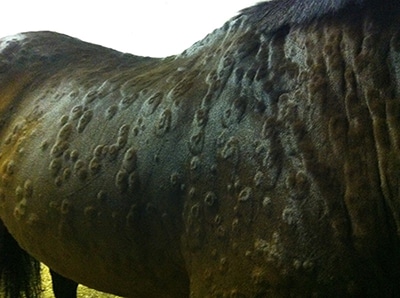
Sweet Itch Causes, Symptoms & Clinical Treatment
Sweet Itch is extremely common and one of the most difficult skin conditions to control. The disease is caused by an allergic skin reaction to midge saliva introduced when the midges bite. Most cases are seen from March to October and remission usually occurs in the winter.
All breeds can be affected, and there is evidence that susceptibility is inherited.
It is inadvisable to buy an affected horse unless you are prepared to make a major commitment in time, effort and expense to control the problem. Should the horse prove unsuitable for your requirements, it may be difficult to resell.
Clinical Signs Of Sweet Itch
- The horse is at grass for all or part of the day.
- The problem can start at an early age, even as a foal. Older cases may occur when the horse is moved somewhere where midges are more common.
- Rubbing usually starts on the mane and tail and then spreads to the face, topline and rump. The area is rubbed bald, the skin may break and weep serum or even blood.
- Occasionally severe cases will also rub their legs, chest and belly.
- Rugs may be damaged due to rubbing on fence posts and so on.
- If the horse has nothing to rub on (for example if the paddock is surrounded by an electric fence), it may roll frequently, or when it is brought indoors, rub frantically on the stable walls.
- Long-standing cases develop corrugation and thickening of the skin of the dock and base of the mane.
Best Sweet Itch Lotions & Potions 2023
Sweet Itch Rugs
Undoubtedly the best control method is a purpose-made sweet itch rug that covers the head, neck, belly and dock. This must be used at all time, including when the horse is indoors.
Sweet itch rugs should not be used if the horse is already rubbing, as it will ruin the rug in a matter of days.
Obtain the rug and then arrange for the vet to administer a short-acting corticosteroid or antihistamine treatment to eliminate the clinical signs before rugging. If in spite of rugging, the horse is still itching it suggests one of the following:
- The rug was first used while the horse had active disease. Sweet itch may take a long time to subside and initial drug treatment is usually advisable.
- Not enough of the body is covered or the mesh size is too large, i.e. it is not a purpose-made sweet itch rug. It is also worth noting that standard fly veils and fly fringes will also be of little use. Whilst fine for protecting against flies, a full face sweet itch mask with fine meshing is required in these circumstances.
Insecticides
A second-best approach is to apply an insecticide to the susceptible areas of the body. Benzyl benzoate is the ingredient of most proprietary sweet itch preparations. It is best mixed with an equal volume of liquid paraffin.
Insecticides containing pyrethroid compounds are moderately useful but the concentration must be increased from that recommended for fly control and they must be applied every day.
There are a huge number of proprietary anti-sweet itch skin lotions and creams. Most are combinations of repellents and insecticides and must be applied generously (on the face and dock, and extending about 30cm/12inch either side of the spine) and at least daily. They are rarely as effective as a sweet itch rug.
Insecticides are much more effective if the mane is hogged and the dock is trimmed or pulled short, and they must never be applied to inflamed skin. In general pure fly repellents, especially if based on essential oils (citronella, tea tree and so on) are useless as they are far too short-lived. Repellents containing DEET are more effective but they need to be applied twice daily at least.
Stabling
Keeping the horse stabled indoors during the peak periods of midge activity (dawn until 10am, and 3pm until after dusk) is useful. However, during still, humid weather midges may be active all day. Hang net curtains over doors and windows and use a strong fan to discourage midges entering stables.
Keeping your horse calm and relaxed in the stable can help with managing sweet itch symptoms in a number of ways:
Reducing stress: Stress can exacerbate sweet itch symptoms, so keeping your horse calm and relaxed in the stable can help reduce stress levels and prevent the symptoms from getting worse.
Preventing self-trauma: Sweet itch can cause intense itching and discomfort, and horses may scratch or bite at affected areas in an attempt to relieve the itch. This can lead to self-trauma and make the symptoms worse. By keeping your horse calm and relaxed, you can help prevent self-trauma and reduce the risk of secondary infections.
Minimizing exposure to insects: Sweet itch is caused by the bites of certain insects, so minimizing your horse’s exposure to insects can help reduce the severity of the symptoms. Keeping your horse in a clean, well-ventilated stable with screens on the windows and doors can help keep insects out and reduce the risk of further bites.
Supporting healing: Calm and relaxed horses tend to have better immune function and overall health, which can help support the body’s natural healing processes. By keeping your horse calm and relaxed in the stable, you can help support healing and recovery from sweet itch.
Overall, keeping your horse calm and relaxed in the stable is an important part of managing sweet itch symptoms. By reducing stress, preventing self-trauma, minimizing exposure to insects, and supporting healing, you can help keep your horse comfortable and minimize the impact of this uncomfortable condition.
Other Approaches To Dealing With Sweet Itch
Environment
Sweet itch susceptible horses are best kept in exposed windy fields well away from damp sheltered area where midges breed.
Feed Supplements
The myriad of dietary supplements available may aid control but will never be sufficient on their own:
- Garlic is popular but no true repellent activity has been demonstrated in research studies in people.
- Research in Canada indicates that feeding linseed (cooked linseed or feed-grade linseed oil) reduces the irritation resulting from midge bites.
Homeopathic remedies have in general been ineffective.
Veterinary treatments
Drug treatment, principally using corticosteroids and antihistamines, are reserved for:
- When short-term treatment is necessary to eliminate clinical signs while other methods are organised.
- Where the owner is not able or willing to use other approaches.
Corticosteroids
Corticosteroids are extremely useful and will suppress clinical signs effectively. However long-term corticosteroid treatment carries a risk of inducing laminitis and should only be used as a last resort. Antihistamines are only moderately effective and must be given in large doses.
Desensitisation
This is an immunological approach to control. The aim is to induce blocking antibodies that prevent the sweet itch inflammatory response. Unfortunately, the treatment is expensive, requires multiple injections, has mixed results and takes a long time to work. It is not recommended at present. New immunological approaches are being developed.

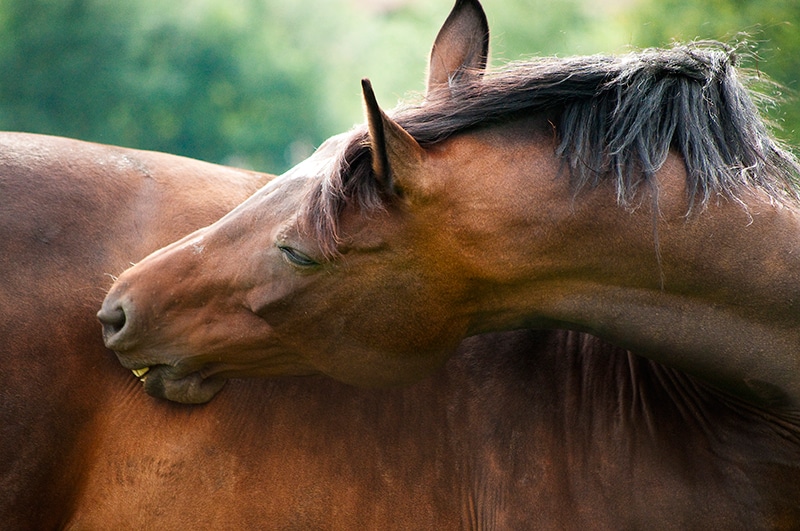
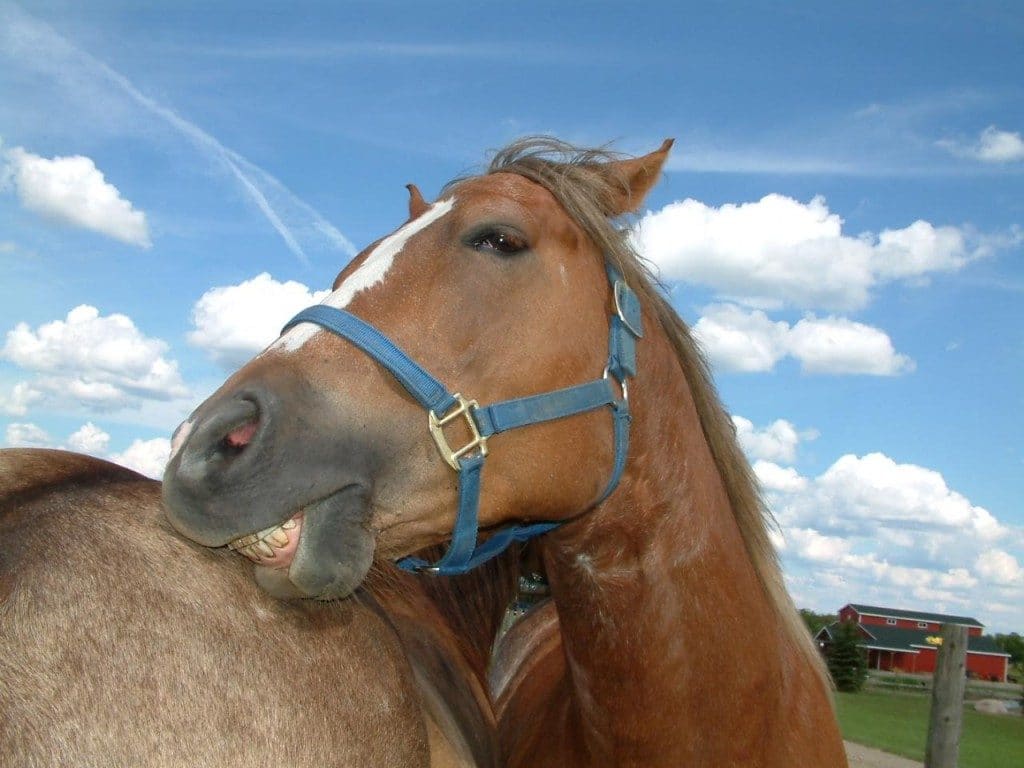
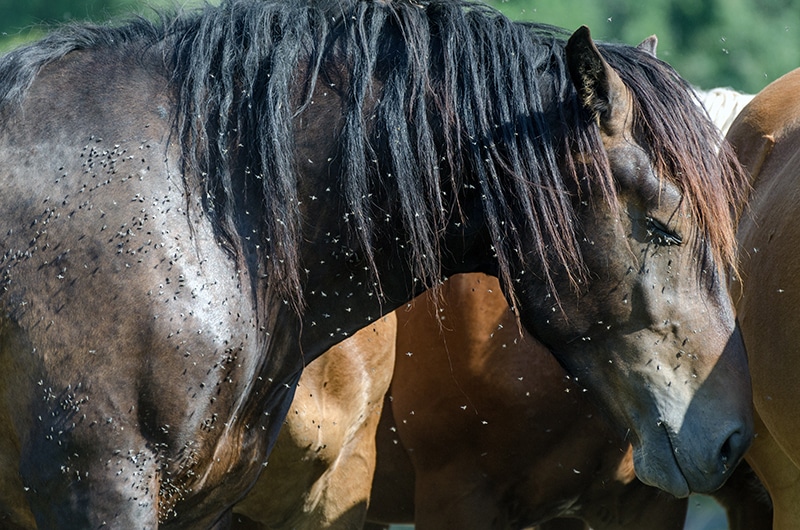
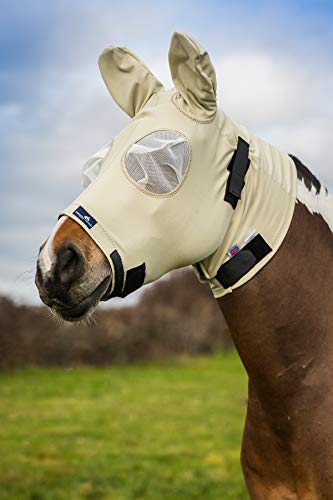



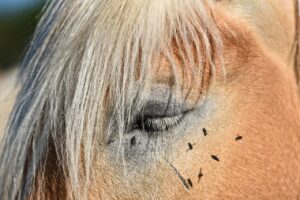
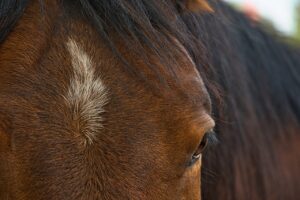

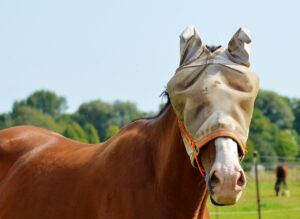

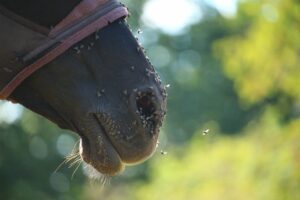

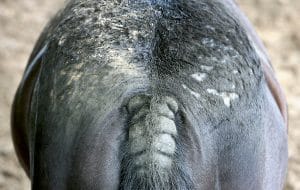
If its raining but warm do you just turn out in the sweet itch rug and let them get wet?
Yes. Sweetitch rugs are designed not to absorb water so the rain just passes through and the horse dries normally when it stops raining. Mine go out on the rain in their SI rugs all the time without issues.
It all depends on your horse…..if you would usually rug irrespective of whether they wear a SI rug in the rain you might want to rug. As my lad is retired personally I never rug (except his SI rug) unless very cold and or lots of snow…(in the south it happens once in a few years)……
Yep. If I put a not fill turnout on top pony sweats and he itches more when sweaty
I discount the rug and treat it as if it’s not there when deciding . If you wouldn’t normally rug don’t put one on, if your horse would normally need to be rugged pop it over the top.
If it is heavy rain then I turn mine out with a no fil rain rug and spray bite back on her tummy, udder etc which are exposed.
Yes! If it’s cooler I’ll pop a lightweight rain sheet on top, but otherwise my girl is fine out in the rain with her rug.
If it’s light rain I leave mine on- but expecting heavy rain later so I’ve just switched to a combo fly sheet- not as good protection but better than nothing
My old girl suffered really bad with sweet itch and after years of trying just about every lotion going I tried imperial leather talc and can honestly say it worked wonders with her and kept the midges away x
If u look at the ingredients it’s perfect.
May sound silly, I was tearing my hair out too, in the end I stopped with all the lotions and potions, clipped her and just kept her rugged, she’s doing really well.. she still itches but not driving herself (or me mad) xx
Rugs need to be on in the last week of January/first week in February for prevention and kept on till November.
If they’re itching, wash them in Original source mint and tea tree shower gel – it’ll stop any itching.
Piriton will help but it does cause drowsiness – cetirizine is better. Keep them stabled during the day and out at night. A fly rug didn’t help my mare but a sweet itch rug has made the word of difference.
I give coconut oil in feed, rub it into mane and tail, a good rug is crucial. On very bad days I give Piriton, used it for the first time after battling with sweet itch for four and half years years and I am amazed at how well it works. I only use it when really necessary and it calms everything down back to a manageable state.
How much piriton do you use?
I found cetirizine was better for skin issues and also Piriton can be quite sedating. My 14.2 cob has 12 a day split over 2 doses.
Vets can give you a prescription to order large amounts from the chemist .
Hi Rosemary, I was reading your post about using hay fever tablets, how many do you normally use? Thank you.
Can you tell me how many.piriton you give and how often? Thanks
My mare is on 10 am and 10pm as she is sensitive to fly bites and so far is working- I get them off ebay and 360 is about £5.88 and that lasts me for the month
Sweetitich rug with belly flap and full neck and a mask. On early by March and not taken off except for changing or riding. Even when wet, put a turnout over the top. Also. No garlic. Most important thing is getting your horse totally covered before itching starts
We have a fell mare with quite bad sweet itch (she will rub herself to rawness on her face, mane, tail hips and topline if unmanaged). We used to used a neem product called Stop-it-All which worked pretty well on its own but now we use that in conjunction with a sweetitch rug in summer (Equitheme last year but have tried many) and a waterproof rug with a neck for the winter as we live in the South West and the midges can potentially fly at any time of year here. She has a mane and tail and a full coat under this regime if we apply the Stop-it-All to her face, mane and top of her tail twice a week.
So far mine has been good. I’ve been using Think Itch since November and wash him twice a week with oatmeal shampoo.
I do that and so far so good
I think the key is to prevent the reaction in the first place, which means putting the rugs on before the midges arrive so they don’t get bitten.
My mare has been wearing rugs for nearly two months now, and we haven’t had any itching yet as I got in there first. If you haven’t started early with the rug and the reaction has already started, you can control it with antihistamines and topical – but you need to prevent any further bites which cause more reactions.
Sweet itch is strictly an allergic reaction to the bite of the blood-sucking cullicoides fly.
If your horse’s condition *is* an allergy (to the cullicoides midge, for example, but various feeds and pollens and dust mites could be the culprit instead), garlic is not recommended. Feeding garlic is supposed to change the way the horse smells/tastes to various biting insects, making the horse less of a target.
However, an allergy is basically where the immune system is hypersensitive to a particular trigger. An excessive immune response. Garlic is said to be an immune system boosting food. Thus, many have found that garlic WORSENS their horse’s allergies. The benefits of insect bite deterrence was not worth the side-effect of immune reaction flare-up.
First line of defence is a good sweet itch rug and electric fence off anything that can be rubbed on.